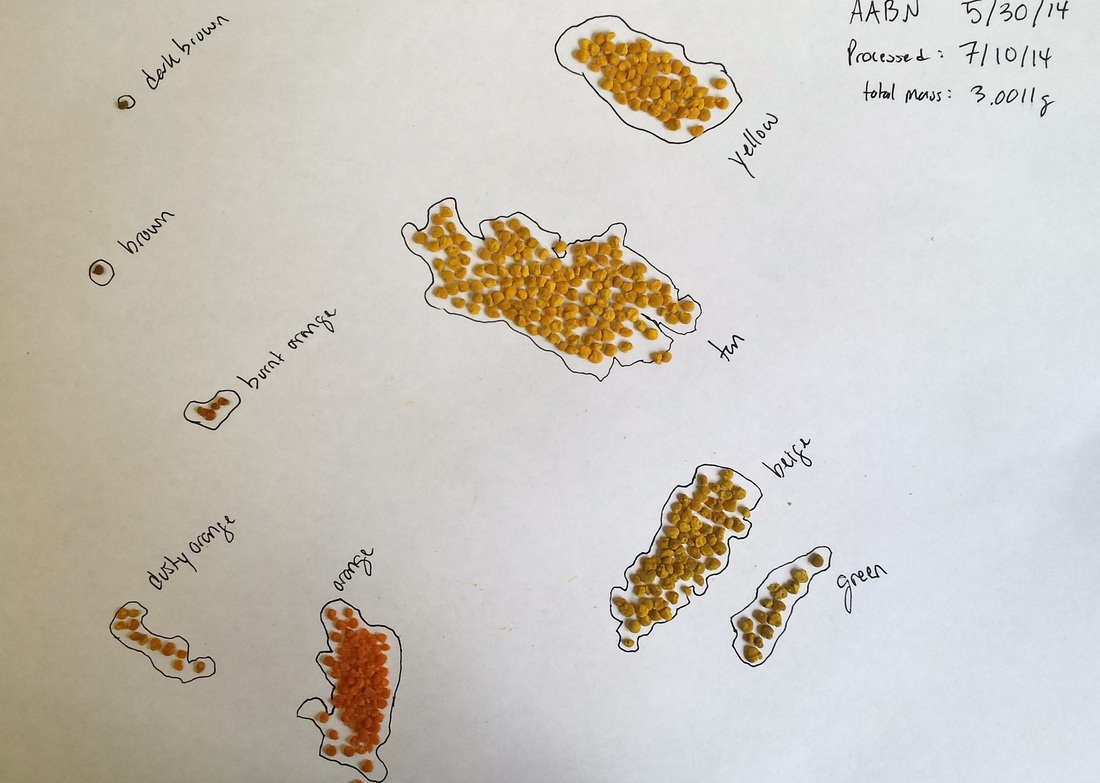By: Todd Waters
Undergraduate Student
Beekeepers take samples approximately around the first and 15th of the month, collecting trapped pollen in 50 mL vials and sending them with collected bee disease load monitoring samples. We label and store pollen samples in a freezer until it’s time for processing. Processing simply means separating the pollen based on color, finding the relative weight of each color type, and separating pollen types for possible further analysis.
1. We first record the beekeeper and trap number, sample date, and process date.
2. Then we weigh the entire sample, keeping out roughly 3 grams for analysis and returning the remainder to the vial.
3. Next we separate the pollen by color. This can take anywhere from 30 minutes to over an hour per sample. This depends on the number and diversity of the pollen and the contrast between pollen types. Moisture in the sample can make the colors bleed into each other and make it difficult to tell one color from another. You can imagine that the goop from a rain-soaked pollen sample is quite difficult (and sometimes impossible) to sort.
Next we color code pollen types for each beekeeper and place piles of sorted pollen in centrifugation tubes for future analysis.
 A 3 g pollen sample from beekeeper sampled May 30, 2014 seen after color sorting. We found 9 distinct colors present: Yellow, Tan, Orange, Burnt Orange, Beige, Green, Brown, and Dark Brown utilizing a paint color palette. Each color represents different species of plant pollen. I like to outline the shape of my piles; they look like little countries or dramatic Picasso drawings.
A 3 g pollen sample from beekeeper sampled May 30, 2014 seen after color sorting. We found 9 distinct colors present: Yellow, Tan, Orange, Burnt Orange, Beige, Green, Brown, and Dark Brown utilizing a paint color palette. Each color represents different species of plant pollen. I like to outline the shape of my piles; they look like little countries or dramatic Picasso drawings. 
 RSS Feed
RSS Feed